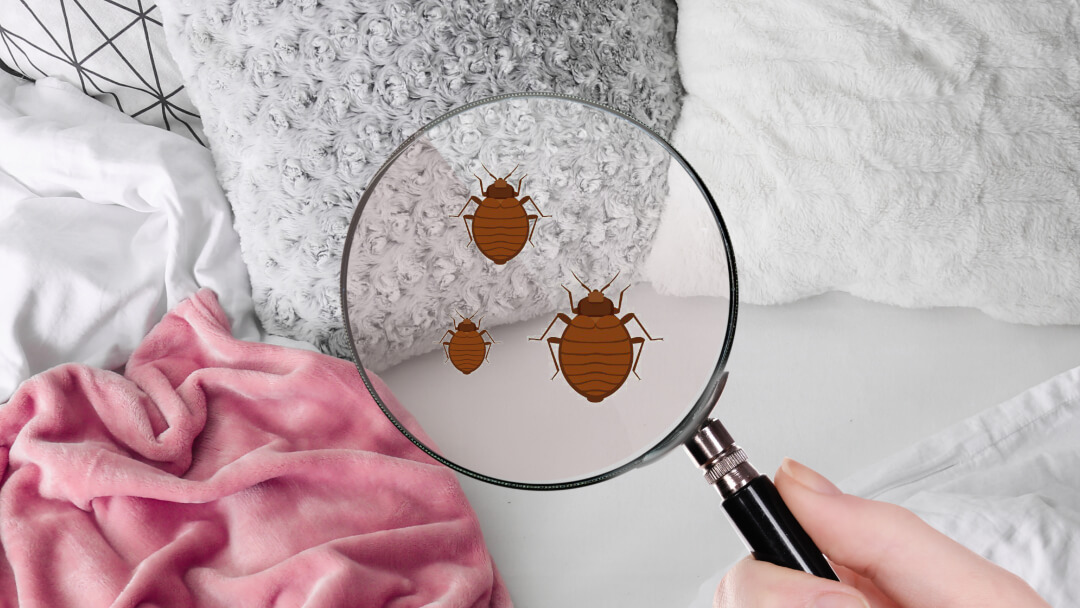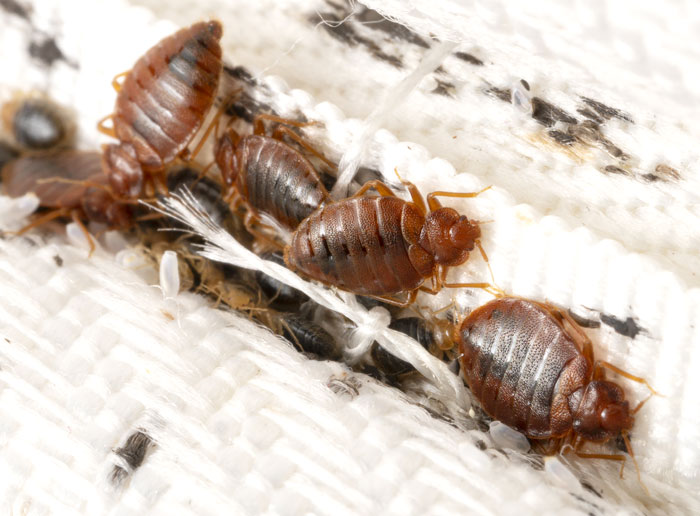Comprehensive Bed Bug Heat Treatment Services for Complete Elimination
Wiki Article
Discover the Different Types of Insect and Their Treatment Alternatives for Effective Monitoring
The management of insects in both household and agricultural settings requires a comprehensive understanding of the various kinds that can invade these atmospheres, in addition to the therapy options offered for efficient control. From house rodents that position health and wellness threats to garden bugs that threaten crop yields, each category demands a customized method. Comprehending the subtleties of parasite actions and the matching treatments is crucial; however, the question remains: what are the most efficient methods that not just resolve existing problems but also avoid future events?
Usual Family Pests
Although house bugs can vary significantly in kind and habits, several share typical qualities that make them a nuisance. Usual household pests include rats such as rats and mice, pests like cockroaches and ants, and periodic invaders such as crawlers and flies. These bugs usually flourish in environments that supply very easy access to food, shelter, and water, making homes particularly prone.
Rodents, for circumstances, are notorious for causing structural damages and spreading out illness. Insects like cockroaches are not just troubling but can additionally set off allergic reactions and asthma in sensitive people.
Reliable parasite administration starts with avoidance, which includes securing entry points, preserving tidiness, and utilizing suitable storage approaches for food. Understanding the habits and features of these usual home pests is necessary for reliable administration and maintaining a healthy and balanced living atmosphere.
Garden Parasites and Their Impact
Yard insects pose a substantial risk to the health and performance of plants, with some quotes recommending that they can trigger up to 40% of plant losses in certain areas. These parasites, which consist of insects such as beetles, aphids, and caterpillars, in addition to nematodes, can cause severe damages by feeding upon plant cells, resulting in stunted development, minimized yields, and endangered high quality.The influence of garden bugs extends past mere visual concerns; they can interrupt environments by modifying food cycle, affecting pollinators, and spreading illness amongst plants. Insects like the crawler mite can compromise plants, making them a lot more at risk to fungal infections. Furthermore, intrusive varieties may outcompete indigenous flora, resulting in biodiversity loss.
Reliable monitoring strategies are necessary to mitigate these risks. Integrated Insect Administration (IPM) methods, which integrate biological control, social methods, and targeted chemical applications, can supply lasting remedies. Normal monitoring and early intervention are critical in protecting against infestations. bed bug heat treatment. By recognizing the specific insects and their behaviors, gardeners can implement targeted treatments that not just protect their plants but also promote a much healthier yard community.
Rats: Recognition and Dangers
Rodents are common yard bugs that can present substantial dangers to plant health and total community security. These little mammals, consisting of types such as mice, rats, and voles, are often recognized by their sharp incisor teeth and robust bodies. Their fur pigmentation differs widely, varying from grey to brownish, and they commonly exhibit a long tail which help in balance and dexterity.The risks linked with rodent problems are complex. First of all, they can cause considerable damage to crops and gardens by gnawing on stems, roots, and fruits, which can cause significant financial loss for gardeners and farmers. Rats are well-known for their role as vectors of different diseases, including hantavirus and leptospirosis, which can be transferred to human beings and pets (bed bug heat treatment). Their droppings and urine can infect dirt and water sources, exacerbating health dangers.
Furthermore, rodents can interfere with the natural balance of regional ecological communities by taking on indigenous wild animals for bed bug heat treatment resources. Their delving behaviors can lead to dirt disintegration and destabilization of plant roots. Consequently, very early recognition and understanding of rodent actions and threats are critical for reliable insect administration.
Reliable Therapy Approaches
When handling rodent invasions, using effective treatment techniques is necessary for lessening damage and wellness dangers. Break traps and electronic catches offer a fast and humane means to eliminate rats, while adhesive traps can aid monitor task degrees.Second of all, lure stations including rodenticides can be purposefully positioned in locations of high rodent activity. These stations must be tamper-resistant to make sure the safety of non-target pets and children. It is essential to select the appropriate lure type, as rodents can create bait hostility if not transformed periodically.
In addition to catches and bait, sealing entrance points can dramatically reduce the opportunities of re-infestation. This involves examining and repairing spaces in windows, doors, and walls.
Last but not least, specialist parasite control solutions can be useful for substantial problems. They have the expertise, devices, and items needed for efficient eradication and can create a tailored administration strategy. By applying these treatment methods, homeowner can properly attend to rodent concerns and shield their wellness and residential or commercial property.
Preventative Measures and Tips

Keeping sanitation is equally critical; guarantee that food is kept in impermeable containers and quickly clean up spills or crumbs. Regularly getting rid of trash and making sure that compost stacks are managed correctly can discourage bugs from being brought in to your home.
In addition, consider landscaping techniques that dissuade rodent habitation. Cut back plant life and maintain mulch far from the structure of your residential or commercial property, as these can provide concealing places for pests.
Conclusion
Efficient bug monitoring demands an extensive understanding of different parasite types and their particular therapy options. Tailored methods for family parasites, garden insects, and occasional invaders are essential for lessening threats and enhancing control steps. By integrating reliable treatment approaches with preventative approaches, such as regular examinations and keeping tidiness, the possibility of infestations can be dramatically lowered. Inevitably, a positive stance on pest monitoring promotes a much healthier environment, safeguarding both agricultural and residential areas from pest-related difficulties.Typical home parasites consist of rats such as rats and mice, pests like roaches and ants, and periodic intruders such as spiders and flies.Rats are typical yard pests that can pose substantial risks to plant health and wellness and total environment security. Very early identification and understanding of rodent actions and risks are essential for effective bug management.
Efficient pest administration starts long before a problem occurs, with positive measures that can significantly decrease the chance of rodent entrance and habitation.Reliable insect management requires a thorough understanding of numerous pest types and their details treatment options.
Report this wiki page